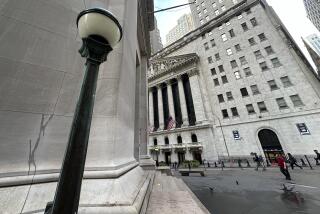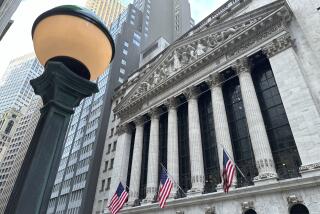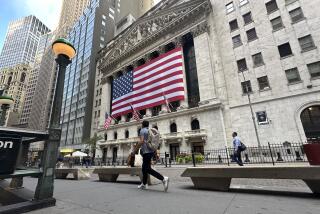Stocks power through April
NEW YORK — The market wasn’t supposed to go this far, this fast.
Just a few months ago, Wall Street analysts predicted this year’s stock rally would level off given the strong run-up seen in the first three months of the year. They held out hope that the benchmark Standard & Poor’s 500 stock index might hit 1,600 by the end of the year.
But the rally in equities has caught even some of the most bullish prognosticators by surprise. The broad S&P; 500 begins the month of May at an all-time high, and the Dow Jones industrial average is within striking distance of hitting 15,000 points.
“Most people weren’t expecting it to be this strong,” said Randy Frederick, managing director of trading and derivatives at Charles Schwab.
Quiz: How much do you know about Internet sales taxes?
The major indexes edged up Tuesday on reports showing rising home prices and a rebound in consumer confidence in April, despite a report of slowing manufacturing in the Chicago region. The Dow added 21.05 points, or 0.14%, to 14,839.80. The S&P; 500 gained 3.96 points, or 0.25%, to 1,597.57 — a record closing high for the index. The Nasdaq rose 21.77 points, or 0.66%, to 3,328.79.
That means the Dow finished April up 13.3% for the year, the S&P; 500 up 12% and the Nasdaq up 10.2%.
“You’ve had a year’s worth of returns in three to four months,” said Marc Doss, regional chief investment officer for Wells Fargo Private Bank.
Investors powered through April despite having plenty to give them pause. Stocks fell about 3% in mid-April following weak economic data out of China, renewed concerns about Europe with a financial crisis in Cyprus, and the Boston Marathon bombings.
But the brief pull-back proved more of a speed bump for the stock market, short of a potential correction of 10% that some on Wall Street anticipated during the quarter.
The question remains whether investors will begin to pull back and perhaps follow the investing adage “Sell in May and go away.”
That might not be the case as long as the Federal Reserve continues to promote its easy-money policies. To stimulate growth, the central bank has been pumping $85 billion a month into the U.S. economy, pushing down interest rates and making borrowing cheaper.
The Fed’s “quantitative easing” programs have made bonds less attractive to investors. To earn returns on their money with interest rates near historic lows, investors have turned to stocks in sectors deemed safe: utilities, healthcare and consumer staples. Stocks that pay dividends have also fueled the rally.
“Investors were prodded off the plank — to jump into the equity market,” said Jack Ablin, chief investment officer at BMO Private Bank
The flip side of low bond yields has meant companies can easily — and cheaply — raise billions by tapping the bond market. Companies have used that capital to buy back stocks, boosting their share prices.
Apple Inc. is a case in point: The tech giant is reportedly planning to raise a record $17 billion in the bond market, in part to buy back shares and pay dividends.
Stock prices, of course, are ultimately a reflection of companies’ earnings and prospects of future growth. One worry is that the average company in the S&P; 500 is on track to post less-than-stellar first-quarter earnings growth of 3.7%, according to S&P; Capital IQ. (Companies are still reporting their profits for the first three months of the year.)
Still, the buybacks mean higher earnings per share for those shares left in the market.
The average company in the S&P; 500 is on track to post record per-share earnings this year — $110.67, a fourth consecutive annual record, according to Christine Short, a senior manager at S&P; Capital IQ in New York.
Wall Street will nevertheless keep a watchful eye on companies’ reported revenues, not so much their profits. Top-line figures are harder to manipulate with accounting tricks and are seen as the best gauge of growth. First-quarter revenues, however, have generally been stagnant.
“Companies are meeting these earnings targets more through cutbacks and expense reductions rather than through revenue growth,” Frederick said. “Eventually companies will run out of ways to cut costs.”
This week, Wall Street will focus on a statement delivered by the Fed after policymakers wrap up a two-day meeting Wednesday. Investors will look for any signals that it may scale back its monetary stimulus programs.
And Friday, the U.S. Department of Labor is scheduled to release its key U.S. unemployment report for April. The federal government’s measure of the labor market may ultimately determine how long the Fed continues propping up the stock market.
“It’s all about the Fed and how long they’re going to stay at the party,” Ablin said.
More to Read
Inside the business of entertainment
The Wide Shot brings you news, analysis and insights on everything from streaming wars to production — and what it all means for the future.
You may occasionally receive promotional content from the Los Angeles Times.










